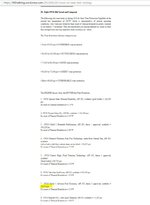G
Guest2019C20
this, but the thinner oil does not provide as much engine protection at full operating temperature.
0w20 is only beneficial for temperatures at or below -20c.
Again, neither of these is true.
Separation of metal parts is done with hydrodynamic pressure.
Start-up protection is provided *when enough oil flows to the parts* (which is achieved with low viscosity).

